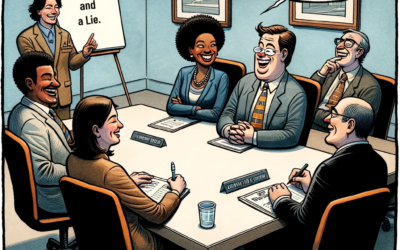
In today’s rapidly evolving workplace, the traditional frameworks for understanding employee needs, such as Maslow’s Hierarchy of Needs, are being re-evaluated. Although still relevant for their historical value, these models are often seen as outdated in addressing the complexities of modern organizational dynamics. This reassessment brings to light intriguing stories, like that of a director eagerly awaiting a promotion to have a coveted coat closet, only to have it taken away. This narrative exemplifies a broader issue: how organizations, while striving for efficiency, may inadvertently overlook basic employee needs.
The Evolving Landscape of Employee Satisfaction
Maslow’s Hierarchy, once a revolutionary concept, categorized human needs into a pyramid, with physiological needs at the base and self-actualization at the top. While this model provided a foundational understanding, today’s work environments demand a more nuanced approach. The story of the coat closet, albeit a small facet of workplace satisfaction, symbolizes the need for organizations to reassess how they cater to their employees’ needs.
A Coat Closet and Organizational Respect
The anecdote of the director and the coat closet may seem trivial, but it highlights a significant point: respecting employees’ basic needs is crucial. When an organization removes assets like a coat closet, which symbolizes status and respect, it sends a negative message. This scenario is a modern echo of Maslow’s theory, suggesting that even the simplest amenities can impact an employee’s sense of belonging and esteem.
The Psychology of Workplace Amenities
The importance of workplace amenities, such as a personal space for belongings, ties into the psychological aspect of feeling valued. Research from [source needed] indicates that when employees feel their basic needs are met, they are more engaged and productive. This observation aligns with Maslow’s hierarchy of needs idea that fulfilling basic needs is a prerequisite for higher-level aspirations.
Adaptive Leadership in Action
Advising the director to place her coat on the floor rather than the back of her chair is an example of adaptive leadership. This act is a subtle yet powerful statement, highlighting the importance of acknowledging and addressing even the smallest employee needs. This approach, as outlined in studies by [source needed], emphasizes the necessity for leaders to adapt and respond to the evolving needs of their workforce.
The Contemporary Workplace: A New Hierarchy of Needs?
While Maslow’s model remains a useful tool, today’s organizational leaders must think beyond traditional frameworks. The question arises: what are the ‘coat closets’ in your organization? What assets, seemingly minor, could significantly enhance employee morale and satisfaction?
Rethinking Organizational Priorities
Organizations should consider the broader implications of seemingly small decisions, like the removal of a coat closet. By understanding and addressing the basic comforts and needs of employees, companies can foster a more inclusive and respectful work environment. This approach not only enhances employee satisfaction but also aligns with the principles of modern leadership and executive coaching.
Conclusion: Leadership and Employee Satisfaction
In conclusion, the tale of the coat closet serves as a reminder that leadership extends beyond grand gestures. It’s about understanding and addressing the basic, often overlooked needs of employees. By adopting a more holistic and empathetic approach to leadership, organizations can create a more productive and satisfying work environment.
Executive Coaching and Employee Needs
Executive coaches play a pivotal role in guiding leaders to recognize and fulfill these basic employee needs. By incorporating strategies that consider the well-being and respect of employees, leaders can foster a more positive and efficient work environment. This approach aligns with the principles of executive coaching, which emphasize empathy, adaptability, and the importance of addressing even the smallest details in the workplace. For more insights on how executive coaching can enhance workplace dynamics, consider exploring CO2 Coaching for their expert guidance and strategies.



